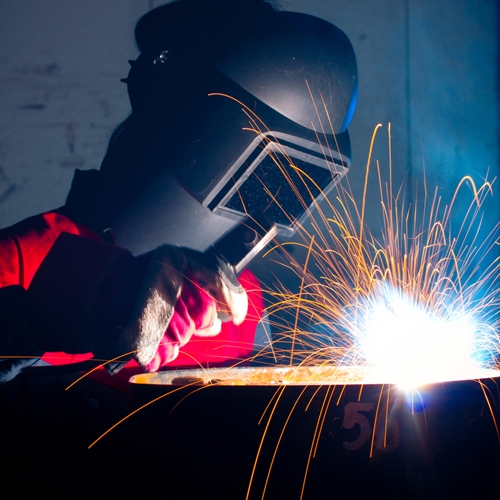
A cement plant near Fairbanks, Alaska, was considered a total loss after a fire occurred on Nov. 4.
Workers were reportedly welding and grinding inside the HC Redi-Mix cement plant before it went up in flames, Daily News Miner reported. Foam polyurethane insulation that lined walls caught quickly.
"It goes up in a heartbeat," said Fire Chief Jeff Tucker of the North Star Volunteer Fire Department. "It's just hard gasoline."
Although the facility is situated in the city of North Pole, Alaska, a plume of black smoke from the fire could be seen in Fairbanks, 6 miles west.
The fire was reported just before 11 a.m. Firefighters from five local departments responded, including North Star, North Pole, Fairbanks, Fort Wainwright and Steese. Initial crews noticed black smoke and flames coming from the top of the building.
The firefighters used a stream of water to keep the blaze contained within the building. As they worked on fire suppression, crews could hear explosions, which were likely from acetylene and propane tanks caught in the heat, according to Tucker.
Combustible liquid hazard
Like propane, acetylene is a flammable gas that can be extremely dangerous if brought in contact with any source of ignition, including high temperatures. According to a safety data sheet for a pure concentration of acetylene, the auto-ignition temperature of the gas is 581 degrees Fahrenheit. However, open flames, sparks or static discharge can also cause an explosion.
Storage of high pressure gases like acetylene and propane requires special care, as rough handling or improper sealing can cause a leak. If high concentrations are mixed with the air, any source of ignition can produce an explosion. Because of this risk, workplace areas that store or utilize the gases need to be properly ventilated.
If combusted, acetylene also produces a toxic risk. Carbon monoxide is a decomposition product that could be released when the chemical burns. In the event of such a fire, a toxic gas detector can determine if levels pose a serious threat.
Luckily, at the HC Redi-Mix cement plant, no such threats were reported. Firefighters managed to successfully contain the blaze, which also prevented two large fuel tanks that sat outside the building from exploding.
The fire was eventually extinguished with no injuries reported. The building, however, along with pieces of heavy machinery and construction materials, was destroyed.
Industrial Safety News brought to you by Safety Systems Technology, Inc., leaders in fire and gas detection.